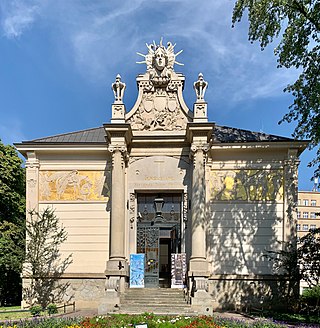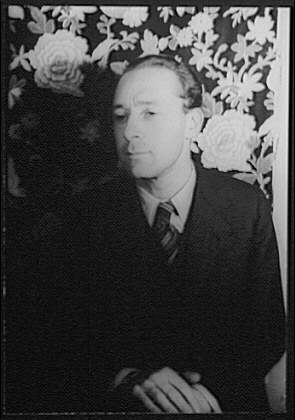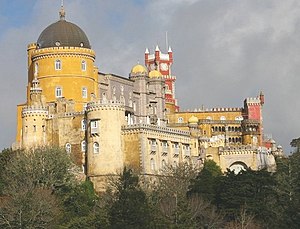
Modernism is a philosophical, religious, and art movement that arose from broad transformations in Western society during the late 19th and early 20th centuries. The movement reflected a desire for the creation of new forms of art, philosophy, and social organization which reflected the newly emerging industrial world, including features such as urbanization, architecture, new technologies, and war. Artists attempted to depart from traditional forms of art, which they considered outdated or obsolete. The poet Ezra Pound's 1934 injunction to "Make it New" was the touchstone of the movement's approach.

Romantic music is a stylistic movement in Western Classical music associated with the period of the 19th century commonly referred to as the Romantic era. It is closely related to the broader concept of Romanticism—the intellectual, artistic, and literary movement that became prominent in Western culture from about 1798 until 1837.

Romanticism was an artistic and intellectual movement that originated in Europe towards the end of the 18th century. The purpose of the movement was to advocate for the importance of subjectivity, imagination, and appreciation of nature in society and culture during the Age of Enlightenment and the Industrial Revolution.
An art movement is a tendency or style in art with a specific art philosophy or goal, followed by a group of artists during a specific period of time, or, at least, with the heyday of the movement defined within a number of years. Art movements were especially important in modern art, when each consecutive movement was considered a new avant-garde movement. Western art had been, from the Renaissance up to the middle of the 19th century, underpinned by the logic of perspective and an attempt to reproduce an illusion of visible reality. By the end of the 19th century many artists felt a need to create a new style which would encompass the fundamental changes taking place in technology, science and philosophy.

Young Poland was a modernist period in Polish visual arts, literature and music, covering roughly the years between 1890 and 1918. It was a result of strong aesthetic opposition to the earlier ideas of Positivism. Young Poland promoted trends of decadence, neo-romanticism, symbolism, impressionism and art nouveau.

Pavel Fyodorovich Tchelitchew was a Russian-born surrealist painter, set designer and costume designer.

In music, modernism is an aesthetic stance underlying the period of change and development in musical language that occurred around the turn of the 20th century, a period of diverse reactions in challenging and reinterpreting older categories of music, innovations that led to new ways of organizing and approaching harmonic, melodic, sonic, and rhythmic aspects of music, and changes in aesthetic worldviews in close relation to the larger identifiable period of modernism in the arts of the time. The operative word most associated with it is "innovation". Its leading feature is a "linguistic plurality", which is to say that no one music genre ever assumed a dominant position.
Inherent within musical modernism is the conviction that music is not a static phenomenon defined by timeless truths and classical principles, but rather something which is intrinsically historical and developmental. While belief in musical progress or in the principle of innovation is not new or unique to modernism, such values are particularly important within modernist aesthetic stances.
In Western classical music, neoromanticism is a return to the emotional expression associated with nineteenth-century Romanticism. Throughout the 20th and into the 21st century, numerous composers have created works which rejected or ignored emerging styles such as Modernism and Postmodernism.

Romantic poetry is the poetry of the Romantic era, an artistic, literary, musical and intellectual movement that originated in Europe towards the end of the 18th century. It involved a reaction against prevailing Enlightenment ideas of the 18th century, and lasted approximately from 1800 to 1850. Romantic poets rebelled against the style of poetry from the eighteenth century which was based around epics, odes, satires, elegies, epistles and songs.
19th-century French art was made in France or by French citizens during the following political regimes: Napoleon's Consulate (1799–1804) and Empire (1804–14), the Restoration (1814–30), the July Monarchy (1830–48), the Second Republic (1848–52), the Second Empire (1852–71), and the first decades of the Third Republic (1871–1940).
Romantic realism is art that combines elements of both romanticism and realism. The terms "romanticism" and "realism" have been used in varied ways, and are sometimes seen as opposed to one another.

Dark Romanticism is a literary sub-genre of Romanticism, reflecting popular fascination with the irrational, the demonic and the grotesque. Often conflated with Gothic fiction, it has shadowed the euphoric Romantic movement ever since its 18th-century beginnings. Edgar Allan Poe is often celebrated as one of the supreme exponents of the tradition. Dark Romanticism focuses on human fallibility, self-destruction, judgement, punishment, as well as the psychological effects of guilt and sin.
Post-romanticism or Postromanticism refers to a range of cultural endeavors and attitudes emerging in the late nineteenth and early twentieth centuries, after the period of Romanticism.
Literary realism is a literary genre, part of the broader realism in arts, that attempts to represent subject-matter truthfully, avoiding speculative fiction and supernatural elements. It originated with the realist art movement that began with mid-nineteenth-century French literature (Stendhal) and Russian literature. Literary realism attempts to represent familiar things as they are. Realist authors chose to depict every day and banal activities and experiences.
Musical historicism signifies the use in classical music of historical materials, structures, styles, techniques, media, conceptual content, etc., whether by a single composer or those associated with a particular school, movement, or period.

Naturalism is a movement in European drama and theatre that developed in the late 19th and early 20th centuries. It refers to theatre that attempts to create an illusion of reality through a range of dramatic and theatrical strategies. Interest in naturalism especially flourished with the French playwrights of the time, but the most successful example is Strindberg's play Miss Julie, which was written with the intention to abide by both his own particular version of naturalism, and also the version described by the French novelist and literary theoretician, Emile Zola.

Realism in the arts is generally the attempt to represent subject matter truthfully, without artificiality and avoiding speculative and supernatural elements. The term is often used interchangeably with naturalism, although these terms are not synonymous. Naturalism, as an idea relating to visual representation in Western art, seeks to depict objects with the least possible amount of distortion and is tied to the development of linear perspective and illusionism in Renaissance Europe. Realism, while predicated upon naturalistic representation and a departure from the idealization of earlier academic art, often refers to a specific art historical movement that originated in France in the aftermath of the French Revolution of 1848. With artists like Gustave Courbet capitalizing on the mundane, ugly or sordid, realism was motivated by the renewed interest in the common man and the rise of leftist politics. The realist painters rejected Romanticism, which had come to dominate French literature and art, with roots in the late 18th century.

Romanticism in Scotland was an artistic, literary and intellectual movement that developed between the late eighteenth and the early nineteenth centuries. It was part of the wider European Romantic movement, which was partly a reaction against the Age of Enlightenment, emphasising individual, national and emotional responses, moving beyond Renaissance and Classicist models, particularly into nostalgia for the Middle Ages. The concept of a separate national Scottish Romanticism was first articulated by the critics Ian Duncan and Murray Pittock in the Scottish Romanticism in World Literatures Conference held at UC Berkeley in 2006 and in the latter's Scottish and Irish Romanticism (2008), which argued for a national Romanticism based on the concepts of a distinct national public sphere and differentiated inflection of literary genres; the use of Scots language; the creation of a heroic national history through an Ossianic or Scottian 'taxonomy of glory' and the performance of a distinct national self in diaspora.











